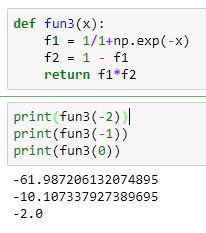Sigmoid function Equation
Definition
Technical Wikipedia Definition : A sigmoid function is a bounded, differentiable, real function that is defined for all real input values and has a non-negative derivative at each point and exactly one inflection point.
Simple Definition - It is basically a 'S' curve or activator function which is commonly used in Machine Learning, it is used to bound/transform/squash a wide range of values within [0,1].
Basic illustration of how Sigmoid Function works,
Defining the Input - Array containing 99999 equally spaced numbers between -10,10
Defining the Sigmoid Function -
Plot of the transformed values -
Distplot of the Transformed values
As we can see from the above plots the values are bounded between 0,1 for any given value.
Plot if it had been e^x instead of e^-x :
Now going back to the Technical Definition,
A sigmoid function is a bounded, differentiable, real function that is defined for all real input values and has a non-negative derivative at each point and exactly one inflection point
- It has non-negative derivative at each point, the meaning of this statement is
A Non-negative derivative means that the function is increasing, in other words increasing slope which can be seen from below figure -
- Exactly one inflection point, means point on the graph of a function at which the concavity changes.









Comments
Post a Comment